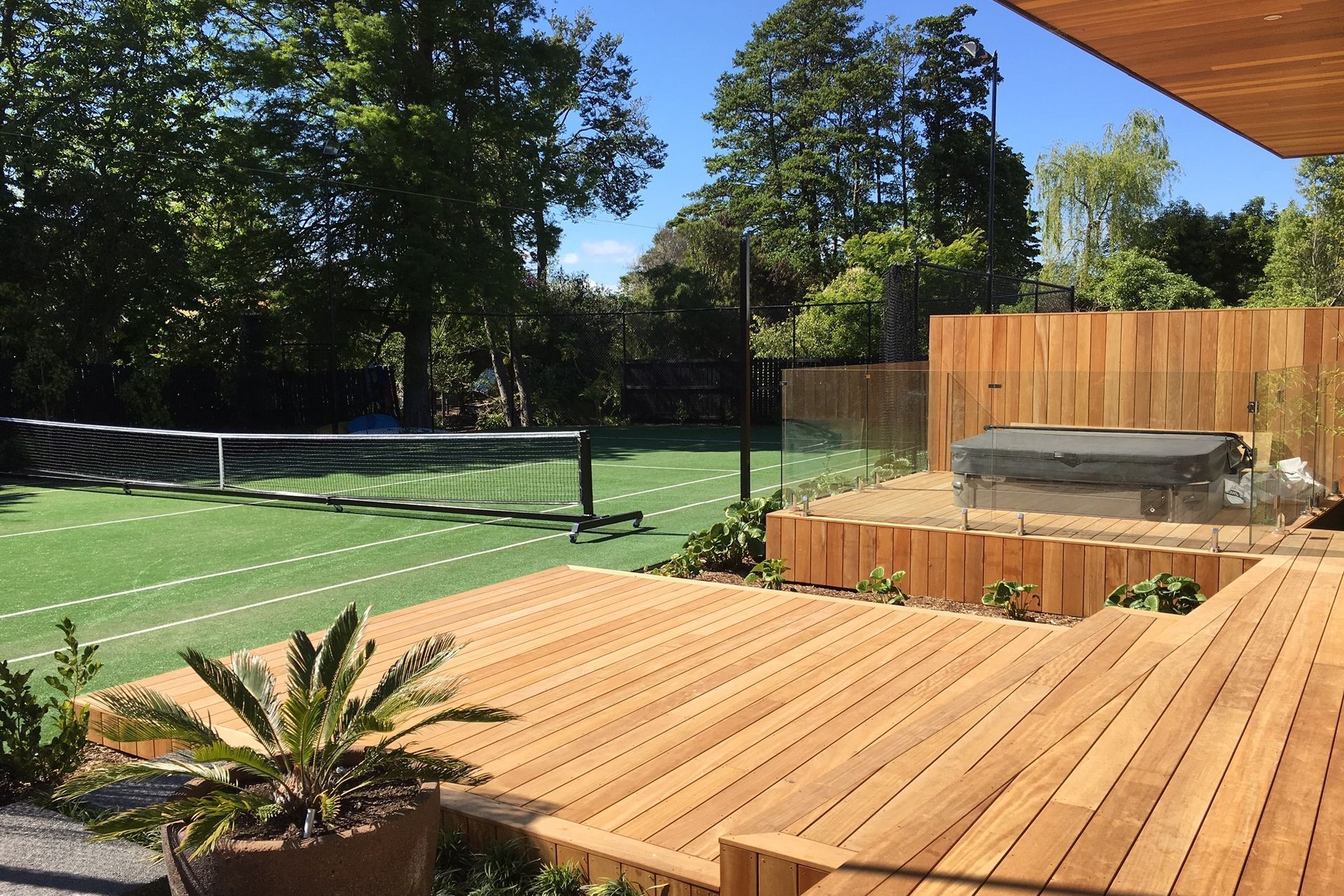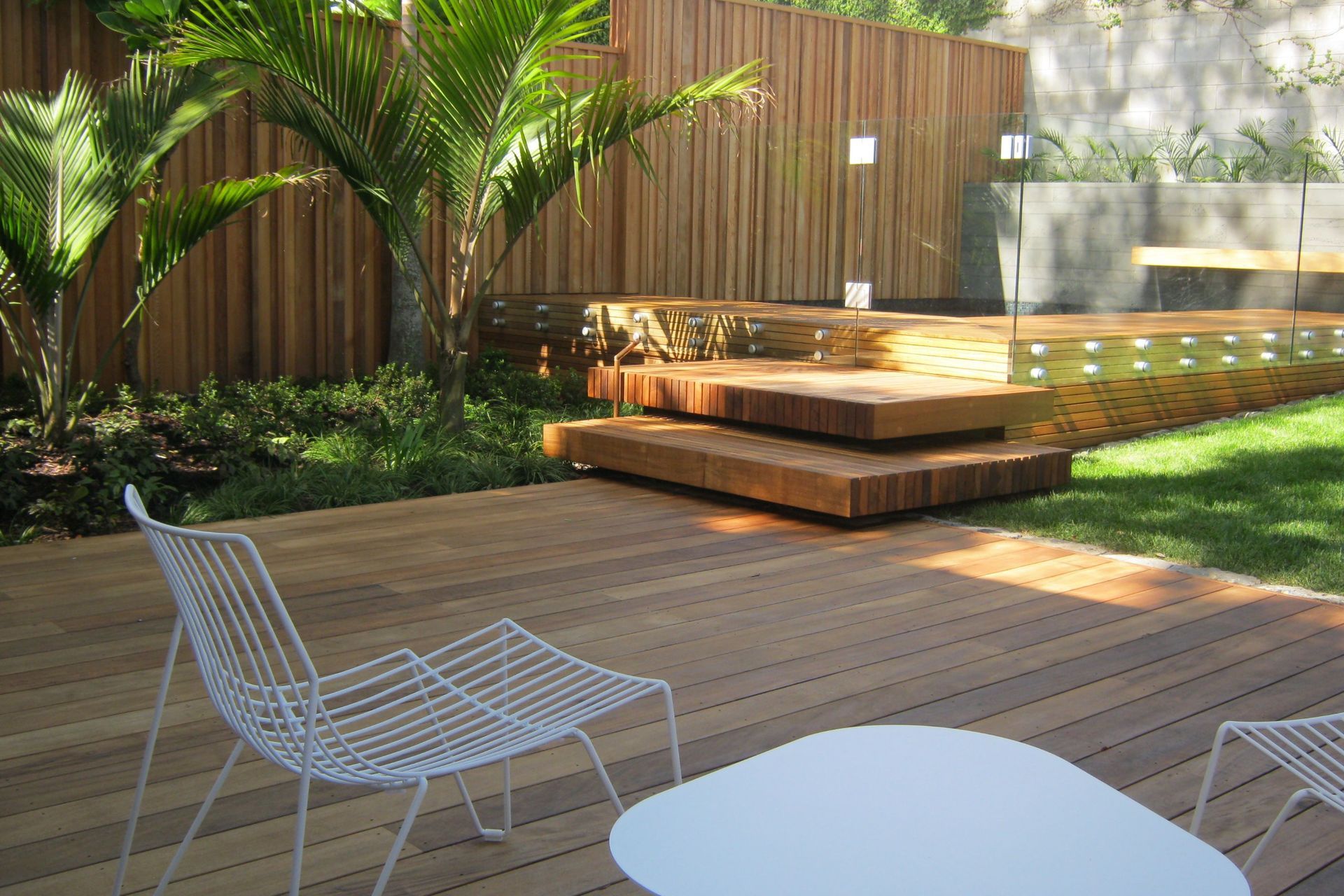How to set up an ideal deck for New Zealand

Sometimes a plain grassy backyard is not enough. Outdoor decking systems are a perfect addition to any patio or garden, even more so during summer months. Compared to most standard yards, a high-quality deck really gives you a warmer feel, while adding a touch of class to your home outdoors.
Decking is versatile, easy to customise, and can be designed to suit any purpose. It can even become a bridge between kitchen and garden during sunny days, allowing for a perfect outdoor lifestyle with food and drinks, or a BBQ party.
Decking and decking systems can be used in gardens of all volumes and shapes. The right choice will effortlessly take you through the seasons, making the most out of your patio. That's why a great deck features much more than a pretty colour or an attractively looking finish. Configuration, utilisation, and finishing touches all have a dramatic effect on a final result.
Last but not least: before building a deck, you should know just how much maintenance will keep you more happy than frustrated.

Small garden decking design ideas for New Zealand gardens
Small garden decking ideas come in handy when you start thinking of better ways to utilise every corner of the available backyard or patio space. Decking can be an excellent design solution for smaller gardens, but you need to set the right layout and choose the best material, colour and finish to make smaller outdoor spaces feel spacious and attractive.
Let's start with the basics: use lighter colours. The same rule that helps to trick the eye in a small interior applies to outdoor areas. Lighter colours will make your deck appear lightweight and broader. Laying the boards widthways will make the deck seem wider as well as laying them right up to the edge on both sides. Applying the same kind of decking boards up the wall will create visual continuity, making the zone seemingly more prominent and more cohesive.
Combining decking with a paved area will enhance dynamics through zoning and serve to visually enlarge a small outdoor space further. You can even use decking boards to create various built-in seating spaces that also double as storage. In general, try to go multifunctional wherever possible.

Why choose composite decking?
Apart from convenience and affordability, a large portion of composite decking’s popularity lies in its sustainability values. Most composite decking boards are made from recycled components, featuring equal parts of wood fibre and plastic, mixed with pigments, preservatives and other side ingredients. Other solutions include wood fibre from mills and furniture factories and shredded polyethylene.
While they don't quite look or feel like real wood, once in place, composite decks do their job requiring minimal maintenance. They don't decay or attract termites, and you can walk barefoot without fear of chips and pieces. Fading is minimal since plastic decking develops a slightly lighter shade in up to three months of sun exposure, and then it stops.
Related article: The best decking materials in New Zealand

Why opt for timber decking
Timber decking can be manufactured from a wide variety of wood species, both soft and hard. Among the most popular decking timber materials are hardwoods, such as teak, cedar, and ipe. While those can be somewhat expensive, they also last longer and require less maintenance compared to affordable softwoods like oak or pine decking. Hardwoods also tend to feature a naturally rich colour that eliminates the need for stains or sealants.
In general, timber decking is long-lasting when appropriately maintained. Wood does the job while adding organic flair and bonus value points to your property. What you need to do is to preserve the original sheen and enhance the wood's natural resistance to elements.
Related article: 15 timber decking materials - which is best for your home?

What sets out Kwila decking
What is Kwila timber?
Kwila timber is a species of tropical hardwood from Southeast Asia. It's popular and extensively used as a decking solution in NZ. A beautiful gold to reddish-brown colour characterises Kwila decks; if left to weather, this hue will gradually age to a driftwood grey. Kwila decking is durable, sturdy, easy to install and maintain and exceptionally stable—this timber doesn't shrink or swell.
Maintenance is no different than any hardwood. Annual hard brushing is advised as a way to clear gaps and remove dirt, grime, and any surface mould. Kwila wood can be water blasted, but at a low pressure to avoid damaging fibres.

What is different about vitex decking
Vitex is a durable hardwood, pale yellowish, creamy-grey to light greenish in colour, originating from the Solomon Islands. Freshly cut Vitex timber has a leathery scent and is greasy to the touch. Trees are then grounded by local communities, usually with portable mills.
What is the difference between Vitex and Kwila timber?
Vitex timber bleeds less than Kwila; its texture is refined with an even grain and slightly glossy. It's effortless to install, compared to other kinds of hardwood decking. It's amazingly strong and unlikely to dent. Vitex timber decking can last for up to 40 years.

Long-lasting decking maintenance tips
How to properly install decking?
Free air circulation under the decking surface is essential in order to help minimise warping and cupping. Proper ventilation balances the difference in moisture levels between the surface and the underside of the boards, thus extending the life and performance of the deck. The sub-deck should have at least a 0.5m distance from the ground, along with adequate drainage. Accompanied by sufficient spacing, which will allow enough airflow to keep the decking healthy.

How to maintain decking?
Make measures to prevent trapping dirt. If you BBQ on your deck, use a grease catcher to avoid stains. Sweep up, clean and seal regularly to prevent accumulations of dirt or leaves that can stain the deck surface. Deck washing with warm soapy water and a stiff bristle broom will clean off surface residues, tree droppings, dirt, dust, and grime. While a pressure washer can effectively clean a deck with plain water, it must be done with great caution and low power; otherwise, it can deeply etch the wood and induce splintering.
Sealing will protect your decking against moisture and prevent the wood from swelling. Additionally, it provides protection from the sun, which can dry it out and result in shrinkage. Decking oils protect the wood from within, making it highly resistant to water and dirt, providing a highly durable finish at the same time.
If possible, try to avoid painting your deck with a solid stain. Sooner or later, it will start to peel and require a substantial amount of maintenance. In contrast, oil-based stains will protect your deck and decrease gradually and naturally.
